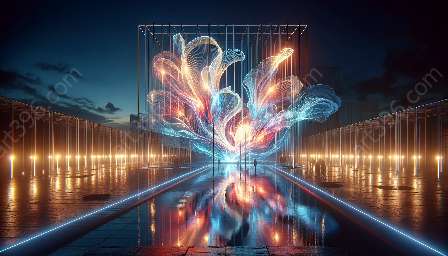Introduction to Light Art
Light art is a dynamic and captivating form of artistic expression that uses light in various forms to create stunning visual experiences. From light sculptures to digital installations, light art pushes the boundaries of creativity and innovation.
Understanding the Principles
The principles of light art revolve around the creative and intentional use of light as a medium for artistic expression. These principles encompass various aspects, including:
- Form and Space: Light art manipulates the interplay between light and space to create immersive environments and sculptural forms that redefine spatial dynamics.
- Color and Perception: Understanding the psychology of color and its impact on human perception is integral to creating impactful light art installations that evoke emotion and engagement.
- Motion and Interaction: Incorporating motion and interactivity into light art installations adds a dynamic and engaging element, allowing viewers to become active participants in the artistic experience.
- Technology and Innovation: Embracing technological advancements in lighting, projection, and interactive systems opens up new possibilities for creating transformative and evolving light art experiences.
- Sensor-Driven Installations: Utilizing sensors to detect movement, sound, or other environmental stimuli, allowing the artwork to react and adapt to its surroundings.
- Interactive Projections: Projection mapping and interactive projections invite the audience to directly interact with the light art, blurring the lines between the virtual and physical realms.
- User-Generated Content: Integrating elements that allow audience participation, such as creating light patterns or altering colors, empowers viewers to co-create the art in real-time.
Interactive Elements in Light Art
Interactivity in light art enhances the immersive nature of the experience by enabling viewers to engage with and influence the artwork. This can be achieved through:
Pushing Boundaries with Light Art
As an ever-evolving art form, light art continues to break new ground by challenging traditional artistic principles and embracing technological advancements. From large-scale public installations to intimate gallery exhibits, light art captivates audiences and offers a transformative experience that transcends traditional artistic mediums.

